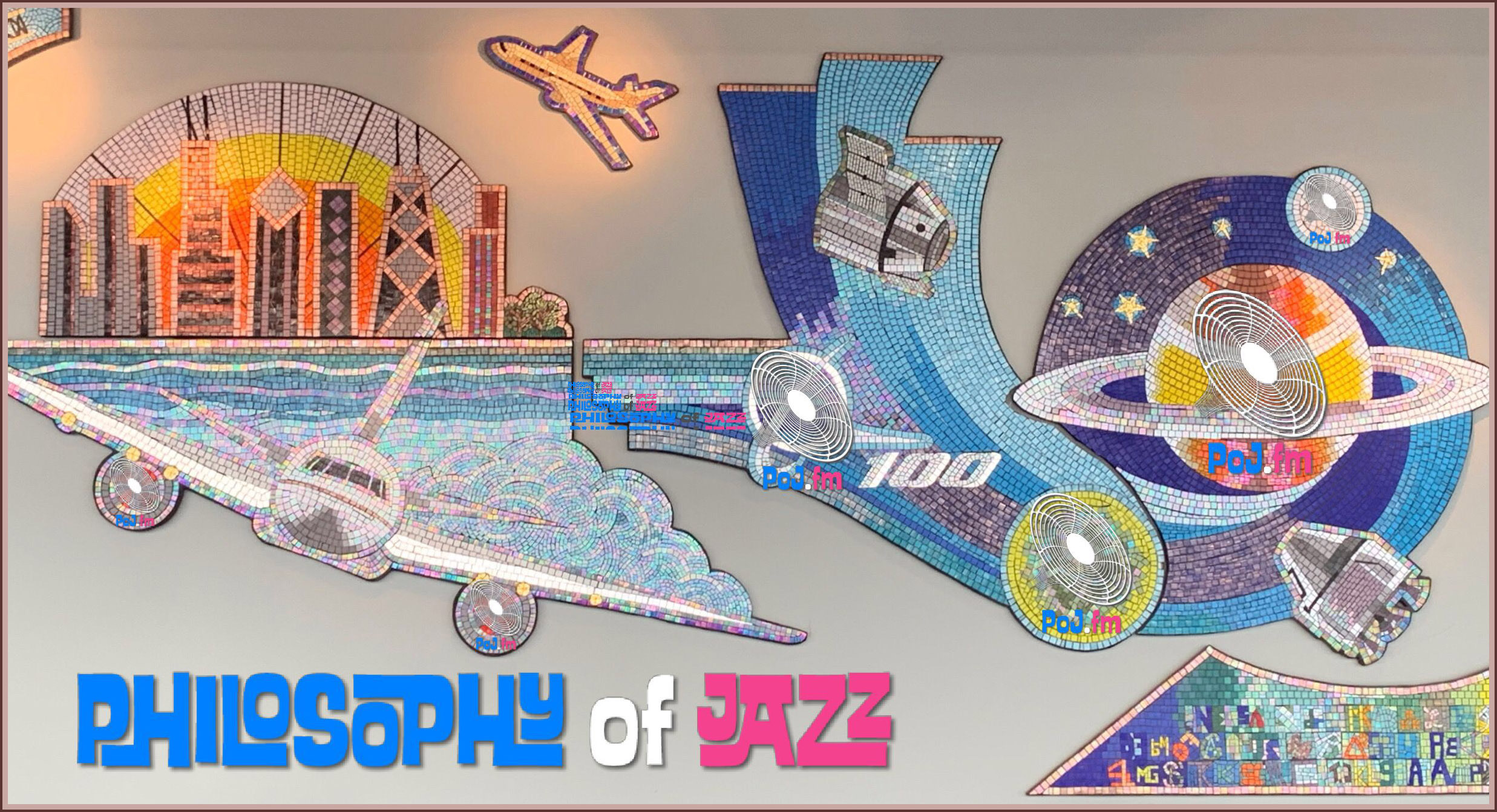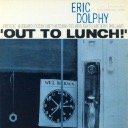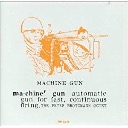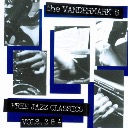Onttype15. What is Free Jazz?
John Coltrane on Ornette Coleman's free jazz influence on him.
“Yeah, well, I feel indebted to him [Ornette Coleman], myself. Because actually, when he came along, I was so far in this thing [the "harmonic structures"], I didn't know where I was going to go next. And, I didn't know if I would have thought about just abandoning the chord system or not. I probably wouldn't have thought of that at all. And he came along doing it, and I heard it, I said, "Well, that - that must be the answer.”[1] (bold and bold italic not in original)
Jazz drummer Philly Joe Jones believes one cannot play effective free jazz unless one already knows how to play their musical instrument well after many years of study.
“I don't think you can really play freedom music unless you know your instrument.”[2] (bold not in original)
Contents
- 1 Definition of Free Jazz
- 2 On Free Improvisation by Christian Munthe
- 3 Objections and Replies to Defining Free Jazz
- 4 Prominent Possible Free Jazz Recordings
- 5 Nine Important Free Jazz Books 📚
- 6 Free Jazz Artists
- 7 Recommended Free Jazz
- 8 Internet Resources on Free Jazz
- 9 The Politics of Free Jazz
- 10 NOTES
Definition of Free Jazz[edit]
As the name implies, free jazz can musically be all over the place, making it harder to pin down definitionally. Terminologically, the music produced during free jazz's nascent period from the 1960s and 1970s had many labels, including "avant-garde," "energy music," and "The New Thing." During its early to mid-1960's heyday, much free jazz was released by the independent ESP-Disk label.
“There had been experiments of "free jazz" before Coltrane and Coleman, notably Lennie Tristano's "Descent Into Maelstrom" and Stan Kenton's "City Of Glass"; and similar rebellions against traditional harmony were ubiquitous among contemporary classical composers. However, Coltrane and Coleman were black, not white. They injected into "free jazz" a different spirit of rebellion, one that was inevitably grounded in the racial tensions of those times. "Free" jazz happened at the same time that "freedom" was becoming the slogan for an increasing bitter confrontation with the white Establishment. Free jazz and the civil-rights movement grew in parallel. Free jazz was a new kind of music, but it was also, to some extent, a musical metaphor for the other kind of freedom, in the sociopolitical dimension.”[3] (bold and bold italic not in original)
Musical Characteristics of Free Jazz[edit]
-
 Philosophically, free jazz stands against the status-quo and seeks ways to move forward and change.
Philosophically, free jazz stands against the status-quo and seeks ways to move forward and change. -
 No steady pulse or meter.
No steady pulse or meter. -
 No set key or harmonic structure.
No set key or harmonic structure. -
 Role of rhythm section is altered because the time keeping responsibilities have been abandoned. The rhythm section can become frontline players.
Role of rhythm section is altered because the time keeping responsibilities have been abandoned. The rhythm section can become frontline players. -
 Typically, a piano was no longer included in the rhythm section, with the exceptions of Alice Coltrane, Cecil Taylor, and Borah Bergman and others.
Typically, a piano was no longer included in the rhythm section, with the exceptions of Alice Coltrane, Cecil Taylor, and Borah Bergman and others. -
 Becomes more percussive.
Becomes more percussive. -
 Free from structure so that 12 bar blues and 32 bar form no longer govern the structure of performances with an absence of predetermined chord progressions.
Free from structure so that 12 bar blues and 32 bar form no longer govern the structure of performances with an absence of predetermined chord progressions. -
 The focus is on improvisation with extensive use of extended sounds and non-tempered intonation or microtones along with explorations of higher registers, shrieks, wailing and percussive uses of instruments and dissonant tone structures, including the use of extended techniques permitting the playing of more than one note at a time, i.e., multiphonics.
The focus is on improvisation with extensive use of extended sounds and non-tempered intonation or microtones along with explorations of higher registers, shrieks, wailing and percussive uses of instruments and dissonant tone structures, including the use of extended techniques permitting the playing of more than one note at a time, i.e., multiphonics.
-
Three musical aspects constitutive of free jazz:
-
 Musical instruments in free jazz use individualized and extended techniques and sounds, sometimes with more exotic musical instruments added, such as bagpipes, tárogató, flute, soprano saxophone and with the piano eliminated. Playing free jazz on the piano, however, has been successfully accomplished by such pianists as Borah Bergman and Cecil Taylor.
Musical instruments in free jazz use individualized and extended techniques and sounds, sometimes with more exotic musical instruments added, such as bagpipes, tárogató, flute, soprano saxophone and with the piano eliminated. Playing free jazz on the piano, however, has been successfully accomplished by such pianists as Borah Bergman and Cecil Taylor.
-
How free jazz differs from avant-garde jazz[edit]
Number one jazz textbook author in the world, Mark Gridley, explains the differences between free jazz and avant-garde jazz. The latter term is of French origin and is used to describe whatever is the most recent cutting edge approach to doing an activity. Dictionary.com defines avant-garde as “the advance group in any field, especially in the visual, literary, or musical arts, whose works are characterized chiefly by unorthodox and experimental methods.” In music then, being avant-garde implies that the musical product is an experimental treatment of an unorthodox or daring approach producing something considered radical at this time.
Now that we know this it is easy to distinguish avant-garde jazz from free jazz. Free jazz is an intentional rejection of not following the former musical rules involving staying in a key, using chord changes, following a pre-determined score, and so forth. Avant-garde jazz just means making musical experiments that are relatively new or being pursed in an unorthodox or non-standard manner. In the 1950s, modal jazz, which is for sure not free jazz because it can be highly arranged, could be considered avant-garde when Miles Davis, Gunther Schuller, and John Coltrane, (and many others) were playing music restricted to modes. Modal jazz is not free jazz because it uses keys, standard rhythm patterns, and usually pre-determined musical score sheets. Free jazz, on the other hand, has no use for any standard musical guidelines; it is open to producing music whose structural features are difficult to describe. In much avant-garde jazz, the musical forms can be delineated, thereby distinguishing it from free jazz.
Philip Tomlinson at Quora answers the question "What is free jazz?":
“Free Jazz is a form of improvisational music associated broadly with the jazz idiom, that first came about in the 1950s. Standard or “normal” musical rules are stretched or ignored entirely. Free jazz players employ unusual chords, changes, meters and tempos and dynamically shift between them often without warning. A big emphasis is placed on improvisation and players often seek to find unusual or “accidental” sounds from their instruments while doing so, either solo or in small improv groups.” (bold not in original)
➢ Do these remarks explain what makes music qualify as free jazz?
Suppose someone tried to play 'free' rock and roll. Would this be different from free jazz? One could certainly mirror what Tomlinson said about free jazz. Here's what it would be:
“Free Rock and Roll is a form of improvised music associated with rock and roll that first came about in the 1960's. Standard or "normal" musical rules are stretched or ignored entirely. Free rock and roll players employ unusual chords, changes, meters and tempos and dynamically shift between them often without warning. A big emphasis is placed on improvisation and players often seek to find unusual or "accidental" sounds from their instruments while doing so, either solo or in small improv groups.”
➢ What do we learn from this? Several questions come to mind.
Is Free Rock Just Jazz-Rock Fusion?[edit]
➢ First, is free rock and roll just jazz-rock fusion? It doesn't seem likely for three reasons.
- (1) Part of the problem with trying to address this question is to get a better understanding of what free rock and roll would be like. It cannot be identical to just regular old rock and roll with improvisation since this is already done on regular rock and roll, so we would not need a special genre name for this activity.
- (2) Next, there is the problem of how free can a free rock and roll player be and yet still have the music count as rock and roll. If an individual or group gets too far away from rock and roll 'conventions' then we start having good reason to believe the music being played is no longer rock and roll.
- (3) Additionally, since jazz is not rock and vice versa it is hard to understand how free versions of their different and respective genres would make them identical to each other.
What Defines Rock and Roll?[edit]
➢ What makes music count as rock and roll in the first place? What is an effective musical definition of rock and roll?
Oxford Dictionaries gives this definition for rock and roll 🎸:
“Rock and Roll is a type of popular dance music originating in the 1950s, characterized by a heavy beat and simple melodies. Rock and roll was an amalgam of black rhythm and blues and white country music, usually based on a twelve-bar structure and an instrumentation of guitar, bass, and drums.”[4] (bold not in original)
➢ Second, if we can use the very same descriptions for both free jazz and for free rock and roll does this make them the same genre of music?
No one believes that jazz and rock and roll are the same genre of music even though a specific rock song can have many musical features found in both musical genres. Rock and roll can mix together the diatonic musical scale with a pentatonic musical scale just as jazz typically does. Rock and roll can also be performed using syncopation. Lastly, and perhaps most importantly, rock musicians can improvise while they are performing rock and roll. All of these are important musical features in jazz.
How Does Rock Differ From Jazz?[edit]
➢ What then accounts for the differences in these two genres or styles of music?
An answer to this question has already been given by the Oxford Dictionary's definition for Rock and Roll. A typical rock tune has a 12 bar structure, often uses guitar, bass, and drums instrumentation (e.g. Cream, or the Jimi Hendrix Experience), remains a dance music because of its easily recognized tempo, rhythm, and beat, incorporates blues aspects from music such as the blues or country, and has a relatively simple hummable melody, often with hooks.
Mark Gridley, in his article "Clarifying Labels: Jazz, Rock, Funk and Jazz‐Rock,"[5] provides a lot of ways to distinguish rock from jazz.
“Jazz of almost any period can be distinguished from rock of the 1950s and 60s in that rock typically has:1. shorter phrase lengths
2. less frequent chord changes
3. less complexity of melody
4. less complexity of harmony
5. less use of improvisation, especially in accompaniments
6. much more repetition of melodic phrases
7. more repetition of brief chord progressions
8. much simpler drumming patterns
9. more pronounced repetition of drumming patterns
10. more pronounced repetition of bass figures.
More of rock performance is preset than is an average jazz performance. Not only does jazz ordinarily require solos to be improvised fresh each and every time they occur, but jazz also requires that the accompaniments for the solos be improvised. Even the accompaniments for the theme statements are often different in each performance of a given tune.
Rhythmic feeling provides another means for distinguishing jazz from rock. Where jazz places emphasis on flexibility and relaxation, rock emphasizes intensity and firmness. Where jazz attempts to project a bouncy feeling that has a distinct lilt to it, rock seems to sit on each beat instead of pulling it along or leading it as jazz does. Jazz musicians often characterize the time sense of rock musicians as being straight up and down rather than being shuffling or loping as jazz seems to be.
Instrumentation preferred by jazz musicians was different from that preferred by rock musicians. During the 1950s and 60s, rock placed far greater emphasis on electronic instruments and high amplification of ordinary instruments than was usual in .jazz. Instrumental proficiency of players is another area of difference between jazz and rock. Jazz musicians, as a group, have tended to possess more instrumental proficiency and greater command of compositional and improvisational skills than rock players. Prior to the 1970s, conservatory graduates were far more common in jazz groups than in rock groups.[6] (bold and bold italic not in original)
Let's see what kind of music we are left with if we try to eliminate these rock and roll musical aspects.
➢ What kind of music might the follow description be describing?
- MYSTERY MUSIC DESCRIPTION:
- This mystery music cannot be danced to because it has such an uneven beat, awkward rhythms, and shifting tempos. It does not have a 12 bar musical structure and no easily hummable melody. It is played with oboe, harp, trumpet 🎺, and violin 🎻 . It lacks any obvious country music or any particular blues influences.
- MYSTERY MUSIC DESCRIPTION:
While we might not yet have any clear sense what genre the mystery music falls within, it seems quite unlikely that anyone would guess that the mystery music qualifies as rock and roll. Yet this is the description of what free rock and roll would have to be like or it wouldn't be 'free' enough to count. Of course, the problem is that it cannot be free rock and roll since it doesn't seem like it is rock in the first place.
Can Free Rock Exist?[edit]
At the Pranava website there is a history of improvisation as it developed over the history of rock and roll to the present day. What the author there points out is that in stadium rock and roll the fans want to hear the hits and the way it sounded on the recording so this tends to push most rock bands away from improvisations, with the exceptions of the Grateful Dead and Phish.
➢ What does this show us about free jazz? Can we say the same thing, that certainly has been said in the past, that free jazz doesn't exist because when music is free enough it no longer qualifies as jazz?
➢ Could the mystery music be free jazz? Here we don't seem to have the same contrary intuitions as we did when imagining whether the mystery music was rock. The mystery music could be free jazz.
➢ Third, what more needs to be added so as better to characterize what happens musically during a free jazz as opposed to free some other genre of music?
Again, at Quora, Christopher Smith provides some useful insights into how better to understand and to analyze free jazz musically. He explains why free jazz need not be absolutely free and that this type of music comes in degrees of freedom. Smith continues to reveal the nature of free playing by first contrasting it with more traditional jazz playing, and then discusses the various degrees of freedom that can take place musically.
“It’s not really a very good name [to call it 'free' jazz]. Among people who don’t care for it much, and among people who might like it but don’t really know how jazz is put together, it means it’s improvised music that is noisy and hard to listen to, using extended techniques on the instruments.In traditional jazz, the tune serves as a basis for a series of paraphrases and developments, originally based on the melody, but eventually based on just the harmony, and in later years could step away from the harmony somewhat as well.
The idea of “free” (but let’s just say “free-ER jazz”) is that you may not be restricted in your improvisation by the set harmony. In some cases, the very form itself may be done away with, and maybe even the tempo. Eventually, it is possible to NOT have a set starting point, but grow a piece organically on the spot, simply by listening to each other.
There are a lot of gradations of “free.”
- (1) You can keep the form and harmony, but simply be a little more “outside” in your improvisation.
- (2) You can keep the form, but make an effort to step outside in the harmony as well, eventually getting back to where it is supposed to be. Or not.
- (3) You can dispense with the form and just improvise on something that is iconic to the tune itself, without necessarily following the form of the given melody.
- (4) Some NON-free tunes do this as well, because the harmony accompanying the melody does not lend itself well to being improvised over, so they improvise over something else instead.
- (5) You can keep the tempo and the concept of a barline, or keep the pulse and dispense with the barline.
- (6) Or you can have different pulses going on, which may or may not have an interesting relationship with each other.
- (7) You can stay within the 12-tone system (or even within a 7-note scale!) or you can use microtones.
- (8) You can use standard tone production on your instrument, or you can incorporate some extended techniques to vary the texture.
- and
- (9) You can have a starting point that has been previously decided upon, or not.
The thing that I think jazz has to have is improvisation. The hard part about improvisation is being able to make some sort of coherent statement without regurgitating some pre-practiced phrases, which get old after a while. The hard part (or maybe the easy part!) of playing free-er jazz is that you don’t necessarily have to acquire a lot of vocabulary that only fits together in a certain syntax, so you can concentrate on making things hold together with the other musicians. Coming up with something coherent is always the goal, whether you practise every note like a classical soloist, or create new works from existing vocabulary (like a lot of standard-type jazz) or create new vocabulary. The old-school players called this “telling a story.” We still strive to do that, regardless of style.” (bold not in original)
Relevant Points Regarding Free Jazz Performances[edit]
- Non-musicians, by definition, cannot play music. As a practical matter though non-musicians can play music; they just cannot play it well. If a bunch of non-musicians attempted to play free jazz they would definitely fail. They will not be able to sustain any genuine long term interest in listeners. This is primarily because they will not be making any music, or at best bad music.
- ➢ Why does playing free jazz require musicians to perform it? Why are non-musicians incapable of performing free jazz? What is it about free jazz that makes it that non-musicians cannot play it?
- One reasonable answer that begins to answer the question is that free jazz must still be music and have features that music contains. It is precisely because free jazz must still be music no matter how wild and far out the sounds generated by the free jazz musicians gets. But this is not the only reason. Before we get to other reasons, the question should be addressed as to what musical features makes musicians playing free jazz into music that explains why non-musicians cannot play it?
- ➢ Can there be musical features to a music, or the sound events produced during a free jazz performance, that allegedly has no specific or consistent musical form?
- One way to start to answer this question is to imagine what a free jazz performance would be like if it lacked any musical features? What would non-musical free jazz be like? That is, could there be any sound event that entirely lacks musical features? What are musical features in a sound event any way? This is the question, ultimately, of what makes something be music (or at least musical)?
- Recall that there are other considerations that prevent non-musicians from being able to play free jazz. One of these concerns the specifics of any situation in question. A major concern is what techniques non-musicians would be bringing to the table that are relevant to performing free jazz. To begin to get more specific consider an easily imaginable free jazz performance setup of musical instruments. Assume the instruments in question are a saxophone, a piano, bass and drums. It would be obvious within the first minute of any performance by non-musicians that the people involved "don't know what they are doing." In the case of a saxophone a non-musician would not know how to finger the keys or the different techniques for blowing into the mouthpiece, or how to tongue it. Non-musicians would not know how to breathe properly or even how to play a C note. On a piano, non-musicians will not have proper posture for sitting on a piano bench. They will lack appropriate hand postures and fingering techniques. Their manual dexterity and speed of playing notes and chords will be sorely lacking and obviously bad. Only by luck do non-musicians start to play any chords on the piano that makes any sense in relationship to what the other performers are playing. Non-piano players would not be using proper hand formation for the shaping of one's fingers. Non-drummers don't know how to keep any consistent time on the drum set, would not reference, except by accident, any sophisticated or subtle rhythmical techniques. The non-bass player cannot walk the bass, etc. In short, non-musicians attempting to play free jazz would be simply awful.
- ➢ Why then does (good) free jazz require musicians to perform it?
- The primary reason is certainly that free jazz is music so must be made by musicians. Free jazz always must be music. If it were not music then it would just be noise and so cannot count as jazz.
- What free jazz musicians bring to the table is that they are musicians so know how to manipulate their individual musical instruments in appropriate musical ways.
On Free Improvisation by Christian Munthe[edit]
Christian Munthe's writing is quoted in green followed in between by PoJ.fm commentary in blue.
“What is Free Improvisation? by Christian Munthe (Stockholm University)
Improvisation is the activity of, to some extent, creating and constructing a piece of music in the same time as it is being performed.
For a musical event to be an improvisation the performer must be composing what is being composed simultaneously with the performing of it. Munthe's description permits one person to be the composer while feeding the musical score to a different performing musician. This second person would be playing an improvisation that had been composed improvisationally by the first person, but the second performing musician would not be improvising. As a consequence, it is important for the definition of improvisation that it be the same person who does both the performing while concurrently doing the composing for this activity if it is to qualify as an improvisation in the standard jazz sense of the term.
Improvisation in this wide sense is a necessity in all performed music whether it is called arrangement, interpretation, ornamentation, reading or something else.
Standard use of the term "improvisation" does not make a distinction between wide and narrow senses of improvisation. According to Munthe, so-called, wide improvisation is what individual players bring to the table when they perform a piece following the score strictly that produces his or her own sound. Narrow improvisation is improvisation proper whereby a musician simultaneously composes while performing what is being composed. What Munthe claims to be wide improvisation is not truly improvisation at all as the term "improvisation" gets normally used. If a jazz player played strictly to a musical score and then claimed to be improvising he or she would be laughed out of the room. Yet this is what Munthe claims is occurring. Simply performing a musical score where the score necessarily underdetermines every aspect of a musical performance does not end up counting as having improvised any music precisely because the musician was following a pre-determined composition and not spontaneously generating the musical score being performed.
Furthermore, consider the four features mentioned by Munthe: arrangement, interpretation, ornamentation, and reading. Munthe's claim that reading music could count as an improvisation is just wrong. Same thing for arranging music. All four of these features exist only relative to antecedently existing music. If there was no musical score then there would be nothing to interpret, arrange, embellish, or read. Arranging music requires that there already exists the music that is to be arranged. Hence, none of these four features can count as an improvisation since during a genuine jazz improvisation the music being improvised did not exist beforehand or the musical event could not count as an improvisation, i.e., spontaneously composed while performing.
Usually, the improvising takes place within some kind of given constraints or frames - sometimes guided by formalised rules - which are tied to some established tradition dictating how music should sound and be made according to a particular pattern (e.g., jazz, heavy metal, baroque music or flamenco). At other times the improvising does not take place within some specific tradition, but is still limited by certain rules which have been laid out in advance, such as directions from a composer or director or internalised rules about the proper techniques for playing on and the sound of musical instruments.
This limited form of improvising is seldom seen as strange or special, sometimes it is not even noticed by the musicians themselves. One "plays music" or "plays jazz" or "plays sitar" or "this or that particular piece by this or that composer" - the improvising is included as a matter of course, but is not particularly focused upon by the players.
Then there are a few who, like myself, cannot describe their music-making in any of the above mentioned ways. We are improvising, but, we claim, in contrast to most other improvisation our playing is FREE. There are also listeners who, even if they do not enjoy improvised music in general, like free improvised music. What are we talking about when we say such things?
One understanding of free improvised music is that this is also a tradition (or in the process of so developing) - an idiom with certain (strangely) sounding characteristic timbral properties, structure, idea of form, praxis for performance etc. This view of things - that free improvised music is characterised by its peculiar (and strange) sound - is typical of many reports and reviews of this music in the mass media.
This should come as no surprise. The media, as we all know, has a particularly hard time handling things which do not easily lend themselves to categorisation according to established patterns. But I think that also quite a few followers of free improvised music think that way: when they claim to enjoy free improvised music they report their liking of certain combinations of sounds. Moreover, people who dislike free improvised music often describe their feeling with the aid of words like "screeching", "cacophony", "no melodies" etc. Similarly, I can explain the way one free improvising musician handles timbres and rhythms, relates to co-players, and discuss the ideas of form which are unveiled in the music etc.
However, at the same time there is something which does not add up in this way of viewing the issues.
I remember an interview with the American jazz guitarist Pat Metheny, where he tells the story of how he, after three weeks of intense rehearsals and recordings with saxophonist Ornette Coleman, sat down to compose the music to a film. Coleman's very free attitude towards improvisation had such an impact on Metheny, that he started to search for notes on his guitar with the free state of mind suggested by his work with Coleman. Without thinking about the names of notes or anything like that he went on, and after a couple of hours he had found a sound that he liked. He wrote it down on paper note for note and did not until then realise - to his own amazement - that the sound was the simplest of c-major chords.
I have had similar experiences myself of playing or hearing free improvised music which I suddenly realise fits well into some established idiom. I am quite certain that this experience is not unique.
Another aspect of the same thing is that it is possible for a given piece of what we think of, and identifies as, free improvised music turns out to be to some extent composed in advance. In this case the music sounds the same as if it had been freely improvised, but that does not make it free improvised music.
Both of these examples hint at what is strange in the idea that free improvised music is characterised by how (strange) it sounds. The problem is that this conception aims at the sounding product, while what makes the free improvised music special rather is its history of creation. As Derek Bailey, pioneer and leading figure of European free improvised music has expressed it: "free improvisation is not a kind of music... it is a kind of music making".
Free improvisation hence is an artistic method, but is it a fruitful one? What is the point of making music in this way? Such questions call for a more precise account of the characteristics of the method in question.
The most basic element of the musical method of the free improviser is to be found in the attitudes of the latter towards musical traditions, idioms, genres etc. It has often been pointed out, and rightfully so, that free improvisation cannot amount to a total exclusion of traditional idioms. All of us were raised and fostered within some musical idiom. All of us have a history which has put its mark on us and which influences the decisions we take today - and this also applies when we make music. Sometimes, this gives rise to the reaction that free improvising is an impossibility. This for example seems to be the view of drummer and vocalist David Moss,[4] though I hope to show in the following that this view is based on a misconception. The difference between one who is active within the borders of some particular idiom and the free improviser is instead to be found in the way of looking at this idiom.
All music-making require a limitation of available sound-possibilities. In order for a normal person to have any capability to form the music as he or she wants, some form of (formalised or implicit) principles for sorting and systematising the sounds available is needed. Otherwise these will be totally impossible to survey for the music-maker. Thereby there is a necessary selection of some available sound-possibilities at the expense of others. The chosen principles form an idiom, which is normally seen as a collection of rules for what is allowed, possible and suitable from a musical point of view. To choose to play (and compose), for example, bebop in this way involves a commitment to the rules and limitations - the conception of (good) music - of which this idiom consists. This kind of choice is the normal one among musicians.
The free improviser, however, refuses to make any binding choices of this kind. Certainly, it is trivially true that all music-making is idiomatic in the sense that it requires some kind of limitations. This, however, does not constitute a reason for committing oneself to a particular set of limitations. It is not prohibited to shape the music within the borders of some idiom, but neither is it necessary to keep to it. Particular idioms are no longer viewed as prerequisites for the music-making, but rather as tools which in every moment may be used or not used. Musical (idiomatic) rules are thus not considered to be valid in any other sense than that they, for the moment, are accepted by the improviser. However, in the next moment they may have been discarded in favour of some other point of view.
An obvious consequence of this way of seeing things is that it becomes much more difficult to uphold any sharp distinction between composers and musicians, between those who make the music and those who perform it, when it comes to ultimate responsibility for the emergence of a particular piece of music. Of course, a musician may chose to follow the directions of a composer, but this choice is always open to revision. Such a viewpoint easily makes the world of music turn upside-down. The slightly bizarre idolatry of the composer which is so common, at least within Western written art-music (or "serious" music) suddenly appears without warrant. However, just as unwarranted appears also the subservient role which is taken by many musicians. Certainly, the composer has created an interesting theoretical construction, an idiom, but the performing musician is, according to the viewpoint at hand, in every moment solely responsible for whether the music is to be formed according to this idiom or not. Thus, improvisation turns into a necessity: to perform is to compose and vice versa.
Another consequence concerns the role of free improvised music in relation to the avant-garde - with which it has often been linked. During an interview with the German percussionist, drummer and free improviser Paul Lovens, he told me about the music created by Alexander von Schlippenbach's trio, a group which has been working for many years. Lovens claimed that the group had a certain devotion to the avant-garde in the early years and that their music then presumably was innovative. This state faded, however, as a consequence of the members developing their respective ideals for how they wanted to play together. The group's method still is free improvisation, but, Lovens said, "it is no longer innovative or revolutionary in the true senses of these words".
Thus, in the same way that the starting-point of free improvised music contains a refusal to commit to any particular tradition or idiom, it no more favours any experimental or innovative attitude towards music (other than in the trivial sense that nothing is prohibited and that the music always is a product of the musician's own and, in practice, always unique choices). Certainly, free improvisation has been used as a means to musical experiments and the creation of new idioms, but this is, if not a coincidence so at least no necessity. An experimental or innovative attitude can of course be useful for the free improviser, but this does not lessen the fact that such an attitude is a tool which may also be discarded. Free improvised music is experimental or innovative only in as much as it is made by persons whose ambitions are to innovate or experiment.
This way of looking at innovation, traditions, idioms and rules, I believe to be the key to free improvised music. The free improviser sees things as they are: in every moment he or she chooses and constructs the components of the music which then is being created as well as the idiom which in the same moment is used for making this music. In the light of the resulting sounds and the improviser's continuous evaluation of these, the improvising continues as a series of choices on both these levels. As the free improviser sees it, this is a true description of all music and all musicians, the difference being that the free improviser consciously views music-making in this way.
This conception of what characterises free improvised music is not uncontroversial. It reflects an outlook according to which the artistic work is the ultimate end of the artistic process of creation (given that the artist is pleased with it). However, this view contrasts sharply against a common basic idea of (dare I say traditional?) modernist thinking. According to that idea, the artistic work is essentially a means for consciously changing reality in some way or other. The desired changes may be political, personal or mass-psychological.
Within free improvised music, thoughts of this kind have been voiced by Anthony Braxton, whose goal is hard for me to comprehend but seems to be of a religious kind. In Sweden, the thoughts have been visible in the work of Dror Feiler, whose goal primarily seems to be political, but have, as I see it, got their clearest expression in sayings of saxophone player Johan Petri. Petri seems to mean that improvised music cannot be considered to be free unless it is the product of a psychological process which has affected the player so that he or she has been freed from influences of idiomatic codes, traditions etc. "It is necessary", Petri writes, "to ascribe the designation 'free' a total limitlessness and accordingly reject every idiomatic norm, every gesture sprung from anything that is not personal and revolutionary". Free improvisation here turns into a kind of psychoanalytic therapeutic method, meant to uncover those factors in our personal histories which influence our choices and likes and ultimately aiming at making us capable of rejecting (or at least reflecting on) those factors and become ourselves, so to speak.
For my own part, however, I have some trouble with understanding why it is "necessary" to see free improvisation in this way. Even granted that it would be desirable if the choices of people in general and musicians in particular were less influenced by their past, this seems to be no reason to make such a goal into a defining property of free improvised music. Moreover, since the goal seems impossible to reach,[11] it appears to be plainly insensible to make such a move. Such a conception would mean that free improvisation is impossible. Some improvising musicians - as mentioned earlier, David Moss - admittedly seem to accept such a consequence. For myself, however, this rather constitutes an argument in favour of the claim that Petri's view of free improvisation is unfruitful. A discussion of how free improvisation is to be best explained obviously rests on the presupposition that there is such a thing, or at least can be. If that presupposition is denied, the discussion ends even before it has begun - why, according to one of the parties there is nothing to discuss.
I do not for a moment want to deny that there may be good reasons for free improvisers (and others) to adopt some kind of modernist outlook (for example, Petri's). What I contest is the move to define the notion of free improvisation in terms of such an outlook. For the free improviser to continuously contest the ground for his or her doings or to strive for political effects through the music, may certainly at many occasions be a fruitful tool for making music (especially if the music-maker's evaluation of the music is done from such effects). But outlooks of this kind are also nothing more than tools, which certainly may be put to one side if that is the wish of the person who uses them.
What is the point of free improvisation, then? Is it a fruitful method for making music? My answer is that this depends on who the performer is and which interests he or she has. The advantage of using the method of free improvisation is that it is always possible to revise the music one is in the process of creating as well as the vantage-points of this music. At every moment the free improviser may throw the tools used hitherto overboard and change the direction of his or her music-making. If one is a person whose musical goals are in a constant flux or, at least, have a continuous need for new means of expression, free improvisation thus appears to be a fruitful method. If, instead, one is clear over exactly what it is one wants to do and how one is to do it and if this want is stable over time (the latter is important), it appears as more fruitful to commit oneself to an idiom, either an available one or one which is constructed by oneself. Of course, such a person may also reach his or her goals by using free improvisation, in that case he or she is simply making the same choice of idiom over and over again. But at the same time it seems unnecessary and perhaps distracting to keep a constant lookout for alternative idiomatic prerequisites.
I would like to conclude with a totally unwarranted accusation. I believe that most people who perceive themselves as having stable aesthetic ideals and convictions regarding how these ideals are to be met live within a false picture of things. If they would adopt the viewpoint of the free improviser, their ideals would become much more dizzy and the uncertainty as to which way that really suits them best would increase. On the other hand, however, that judgement may very well be an expression of some wishful thinking on my part.” (bold not in original)
NOTES for Christian Munthe's "On Free Jazz"[edit]
[1] The same observation has been made by Derek Bailey, Improvisation: Its Nature and Practice in Music, second revised edition, (London: The British Library National Sound Archive, 1992), xii.
[2] The interview was conducted by Art Lange in connection with the release of the record which Metheny recorded with Coleman. It was published in Down Beat, no. 6, 1986 with the title "Pat Metheny & Ornette Coleman - Songs of Innocence and Experience".
[3] This statement was included in the first edition of Bailey`s book Improvisation (Ashbourne 1981: Mooreland Publ., p. 151), but has apparently been deleted from the second edition of the book (quoted in note 1) and has not been replaced by any similarly explicit expression of the same thought. However, several statements hinting at more or less the same idea can be found on pp. 83-85 & 142.
[4] Expressed during an interview I conducted with David Moss in 1990, which was published in the Swedish magazine for jazz, Orkesterjournalen, no. 12, 1990, as "Musikalisk mångfald hindrar förstelning" (Musical variety prevents rigidity).
[5] The interview was conducted by me, and published as "Improvisationen är en musikalisk metod som följer sina egna lagar" (Improvisation is a musical method which follows its own laws), in Orkesterjournalen, no. 5, 1990.
[6] For the person who has committed to an ambition to be innovative, the attitude of the free improviser may thereby be seen as a tool which is used in as much as it promotes the aim of the avant-garde.
[7] The last mentioned goal seems to have been embraced by John Cage, at least as to be judged by a TV-interview made quite late in his life. Cage said that the goal for his creative activity was to change people's conception of and relation to the sound surrounding them.
[8] See Graham Lock, Forces in Motion - Anthony Braxton and the Meta-Reality of Creative Music, (London: Quartet Books, 1988). Braxton is an American multiinstrumentalist, composer and a prominent figure within the particular type of improvised music which has grown out of the jazz tradition.
[9] Dror Feiler: "Improvisation and resistance", in Sounds, accompanying booklet to the double-LP SOUNDS - Contemporary Free Improvised Music in Sweden, Blue Tower records BTLP 01/02, 1990, 32. Feiler is a reed player and composer as well as leader of the groups Lokomotiv Konkret and The Too Much Too Soon Orchestra.
[10] Johan Petri: "Unica", in Sounds, accompanying booklet to the double-LP SOUNDS - Contemporary Free Improvised Music in Sweden, Blue Tower records BTLP 01/02, 1990, 12. Petri is member of the group Så Vidare.
[11] To support this claim in a minimally thorough way would lead much too much astray. Let me just point to one thing. Even if we, in our music-making, do (believe ourselves to do) our best to free ourselves from influences of internalised idiomatic codes, this very aspiration has most certainly sprung from such a code - a way of seeing art and music which we have been made to internalise. Hence, even if we would succeed, the result reached would most adequately have to be described as the outcome of a successfully applied traditional or idiomatic norm.
[12] Originally written in Swedish, this text was first published as "Vad är fri improvisation?" in the Swedish magazine for contemporary art-music, Nutida Musik, no. 2, 1992, 12-15. The thoughts expressed in it are anticipated in two earlier texts: "Free Improvised music in Sweden", in Sounds, accompanying booklet to the double-LP SOUNDS - Contemporary Free Improvised Music in Sweden, Blue Tower Records BTLP 01/02, 1990, 4-10; and "From things to sounds ... from sounds to things", linear-notes to a CD by the Swedish free improvising group GUSH, From Things to Sounds..., Dragon Records DRCD 204, 1991.
Objections and Replies to Defining Free Jazz[edit]
At Berkleejazz Wiki the opening paragraph of "Free Jazz: Definition" raises possible problems and objections for defining free jazz.
“There is no universally accepted definition of free jazz, and any proposed definition is complicated by many musicians in other styles drawing on free jazz, or free jazz sometimes blending with other genres. Many musicians also tend to reject efforts at classification, regarding them as useless or unduly limiting.”[7] (bold and bold italic not in original)
Let's break down the above remarks into slightly more developed objections to defining free jazz and supply replies to each objection revealing that each objection is unsuccessful in proving the impossibility of defining free jazz.
Objections with Replies to Defining Free Jazz[edit]
- (1) No Currently Accepted Definition of Free Jazz Exists.
- There are many things that have an unresolved definition where the thing being defined is still under investigation. The mere fact that a universally acceptable definition doesn't exist for free jazz does not preclude the possibility of finding acceptable definitions for it.
- (2) Free Jazz Mixes with Other Musical Genres.
- How is this specifically supposed to be a problem? There are lots of musical types that mix in with other musical types. Does this preclude the development of a successful definition for every musical type? Certainly not.
- (3) Free Jazz Musicians Reject Being Classified.
- Rejecting musical categorization does not eliminate the possibility that there could exist a definable category for the type of music these particular musicians are performing. Multi-instrumentalist Rahsaan Roland Kirk notoriously preferred to label his music with the moniker "black classical music," but this doesn't mean or entail that the music Kirk often played could not have been jazz music. Duke Ellington and Miles Davis sometimes preferred for their music to be unclassified, but again this preference fails to prevent that their music may still be categorizable and many people would concur that Kirk, Ellington, and Davis played jazz.
Other theorists when attempting to explain how jazz functions, or what musicians might do to make a piece of music be jazz, overstep their theoretical bounds and end up making false claims regarding musical properties of jazz, apparently without quite realizing it, and end up applying bogus necessary and/or sufficient conditions for music to qualify or count as jazz. We can investigate this under the label of bogus objections to defining free jazz.
- (4) The Bogus Objections to Defining Free Jazz.
Here's such an example from the admirable volume Discovering Jazz by John Edward Hasse and Ted Lathrop:
“Rhythm is critical to defining jazz: a musician could play the exact same piece with one set of rhythms and it wouldn't be jazz, but the musician could then take another set of rhythms—a syncopated melody played in a swinging way—and it would be jazz.”[8] (bold not in original)
Notice that the author's here are implying that by adding swinging syncopation one can make something non-jazz be jazz and one can find music that lacks swinging syncopation that fails to be jazz. This might seem to suggest that music that lacks swinging syncopation cannot be jazz (assuming swinging syncopation is a necessary condition for jazz) and that music with swinging syncopation must be jazz (assuming swinging syncopation is a sufficient condition for jazz).
Anyone who tried to develop objections on these bases would be thwarted by the facts that neither swing nor syncopation are necessary for jazz and both swing and syncopation separately or together are not guaranteed sufficient for jazz. See Ontdef3. What is the definition of jazz?: Proposed necessary conditions for performing jazz.
Hasse and Lathrop are nevertheless correct that one can take a piece of music that is not jazz and by applying syncopation one ends up "jazzing" it up. This is what early pioneers of the music started doing, especially following a practice of ragtime musicians developed at the turn of the 20th century. It is possible to take a non-jazz music and by syncopating it end up turning into a jazz piece.
Berkleejazz Wiki "Free Jazz: Definition" concludes:
“It would perhaps be best to call [much structured free jazz] modern or avant-garde jazz, reserving the term "free jazz" for music with few or no pre-composed elements.”[9] (bold and bold italic not in original)
Several of the claims made in the above Berkleejazz Wiki can be critiqued beginning with the ironic use of the phrase "free jazz" as standing for a characterizable form of music. Its features, appparently, are distinctive enough and bounded enough (the boundaries are well known) that it can be distinguished by the author(s) of "Free Jazz: Definition" sufficiently to distinguish it when incorporated into "other styles [of music]" or when it is "blended with other genres [of music]." Whatever the author(s) are using to distinguish when free jazz has been either incorporated into another style of music or blended with other genres can be utilized to define it. See Ontdef1: What is a definition?
Prominent Possible Free Jazz Recordings[edit]
- For table below, click or tap on musician's name to see Wikipedia biography or PoJ.fm's Ep16. What are jazz legends notable achievements? Click or tap on album, song title, or album cover to see more information on that item.
- See Abbreviations Table of Musical Instruments
- Best Free Jazz Musicians Ranked at Ranker.com
- NOTE: Authors on the internet often label the music listed in the table below as containing or being free jazz, but evaluators of the music need to decide this for themselves regarding how free any particular artist's performance consists. Some of the music in this table can arguably not be free jazz and certainly musics referred to in the table have varying degrees of freedom. See the relevant Wikipedia article on free improvisation.
20 Essential Free Jazz albums chosen by Chris Kelsey (click on his name for his website) from his "Free Jazz: A Subjective History"[edit]
Quick Overview (no hyperlinks, for those see table below)[edit]
- Lennie Tristano, Intuition (Capitol) recorded 1949
- Ornette Coleman, The Shape of Jazz to Come (Atlantic) recorded 1959
- Ornette Coleman, Free Jazz (Atlantic) recorded 1960
- Ornette Coleman, Dancing in Your Head (A&M) recorded 1973-1975
- John Coltrane, Ascension (Impulse) recorded 1965
- John Coltrane, Live in Japan (Impulse) recorded 1966
- Cecil Taylor, Jazz Advance (Blue Note) recorded 1956
- Cecil Taylor, For Olim (A&M)
- Eric Dolphy, Out to Lunch (Blue Note)
- Archie Shepp, Four For Trane (Impulse)
- Albert Ayler, At Slug's Saloon, Vols. 1 and 2 (ESP)
- Roscoe Mitchell, Sound (Delmark)
- Art Ensemble of Chicago, Full Force (ECM)
- Anthony Braxton, The Complete Braxton (Arista)
- World Saxophone Quartet, W.S.Q. (Black Saint)
- Ganelin Trio, New Wine (Leo)
- David Murray, Children (Black Saint)
- Borah Bergman and Evan Parker, The Fire Tale (Soul Note)
- Ronald Shannon Jackson, Barbeque Dog (Antilles)
- Dave Douglas, Tiny Bell Trio (Hat Art)
20 Essential Free Jazz albums chosen by Chris Kelsey (click on his name for biography) from his "Free Jazz: A Subjective History" [edit]
- NOTE: Click below on musician's name(s) or album title or label title to see Wikipedia entry on them.
| 20 Essential Free Jazz albums chosen by Chris Kelsey (click on his name for biography) from his "Free Jazz: A Subjective History" | ||
|---|---|---|
| Album cover | Musician — Album Title (record label) — Year Recorded | Information |
 Lennie Tristano was a pioneer in attempting free jazz |
"Intuition" is credited as one of the first two freely improvised jazz recordings, along with "Digression" (made at the same session), recorded ten years before Ornette Coleman's "Free Jazz" album. The quintet consisted of leader Tristano, tenor saxophonist Warne Marsh, alto saxophonist Lee Konitz, guitarist Billy Bauer, and bassist Arnold Fishkin, most of whom who had previously played free improvisations together. The only pre-planning on the tunes was the order and timing for when the musicians would join in with nothing else of harmony, key, time signature, tempo, melody, or rhythm determined beforehand.
| |
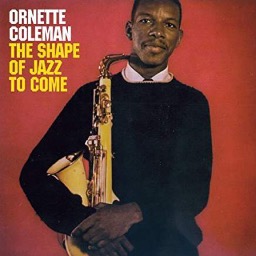
|
info
| |
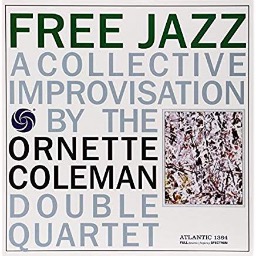
|
info
| |

|
info
| |

|
info
| |

|
info
| |
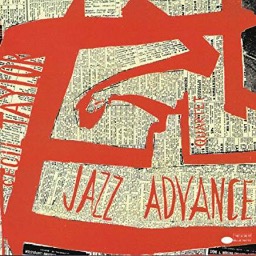
|
info
| |

|
info
| |

|
info
| |
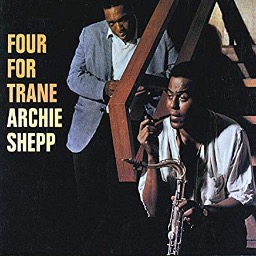
|
info
| |
 
|
info
| |
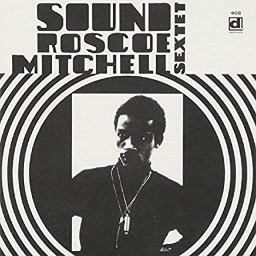
|
info
| |

|
info
| |

|

| |
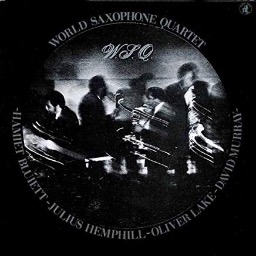
|
info
| |
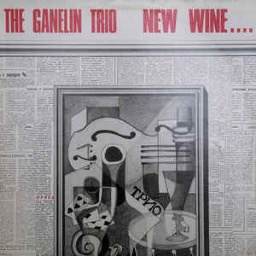
|
||

|
info
| |

|
Chris Kelsey Review of "The Fire Tale" | |

|
info
| |

|
Dave Douglas Discography (as of 2013) | |
Nine Important Free Jazz Books 📚 [edit]
- Four Lives in the Bebop Business - A. B. Spellman (Limelight Editions, 1966)
- Free Jazz - Ekkehard Jost (DaCapo, 1974)
- Chasin the Trane - J. C. Thomas (DaCapo, 1975)
- As Serious as Your Life: The Story of the New Jazz - Valerie Wilmer (1977)
- Musical Improvisation: Its Nature and Practice in Music - Derek Bailey (Prentice Hall, 1980)
- The Freedom Principle: Jazz after 1958 - John Litweiler (William Morrow & Co., 1984)
- Forces in Motion: The Music and Thoughts of Anthony Braxton - Graham Lock (DaCapo, 1988)
- Outcats - Francis Davis (Oxford University Press, 1990)
- Ornette Coleman: A Harmolodic Life - John Litweiler (William Morrow & Co., 1993)
Free Jazz Artists[edit]
John Morthland, in Texas Monthly, writes about those jazz musicians influenced by Ornette Coleman to move into or towards a freer jazz experience.
“Meanwhile, the phrase “free jazz” was being hung on an impressive roster of musicians storming through the doors he’d opened: celebrated names like (John) Coltrane and (Cecil) Taylor, George Russell, Andrew Hill, Charles Mingus, and Eric Dolphy as well as clarinetist Jimmy Giuffre, soprano saxophone player Steve Lacy, bassist Steve Swallow, pianists Paul (Bley) and Carla Bley and Burton Greene, trumpeter Mike Mantler, keyboardist Sun Ra, trombonist Roswell Rudd, tenor players Albert Ayler and Archie Shepp, and the Chicago players such as pianist Muhal Richard Abrams who would help organize the Association for the Advancement of Creative Musicians. All were in some sense deeply influenced by Ornette Coleman, and even past critics were beginning to come around.”[11] (bold and bold italic not in original)
- David S. Ware
- Cecil Taylor: Jazz Advance
- John Coltrane: A Love Supreme
- Trombonist Albert Mangelsdorff
- Alexander von Schlippenbach's Globe Unity Orchestra
- Georg Gräwe
- Theo Jörgensmann
- Johannes "Hannes" Bauer
- Konrad "Conny" Bauer
- drummer Günter Sommer spread free jazz in the Socialist block. Bauer "formed Doppelmoppel, a quartet of two trombones and two guitars" in 1982 and participated in the European Jazz Ensemble which celebrated its 20th Anniversary tour in 1996.
- Rashied Ali and Frank Lowe – Duo Exchange (Survival SR101)
- soprano saxophonist Steve Lacy
- drummer Sunny Murray
- alto saxophonist Jimmy Lyons
- tenor saxophonist Archie Shepp
- trumpeter Bill Dixon, organized a series of Free Jazz concerts at a New York cafe called "The October Revolution in Jazz", which presented many of the artists who would determine the direction of Free Jazz in the '60s and '70s.
- trombonist Roswell Rudd
- drummer Milford Graves
- The event went far in establishing Free Jazz as a movement, and led later that year to the founding of The Jazz Composers Guild, an ephemeral yet influential performance collective that included Cecil Taylor, the pianist.
- pianist Paul Bley
- composer Carla Bley
- Muhal Richard Abrams' Experimental Band, an early '60s ensemble dedicated to finding new methods of jazz composition and performance.
- Members of the Association for the Advancement of Creative Musicians AACM included the saxophonists Anthony Braxton, Joseph Jarman, and Roscoe Mitchell, violinist Leroy Jenkins, drummer Steve McCall, and trumpeter Lester Bowie
- Roscoe Mitchell's "Sound"
- Joseph Jarman's "Song For"
- Dave Burrell - Echo (BYG 529.320/Actuel Volume 20)
- Milford Graves & Don Pullen - Nommo (S.R.P. LP-290)
- Sunny Murray - Sonny’s Time Now (Jihad 663)
- John Tchicai & Cadentia Nova Danica - "John Tchicai And Cadentia Nova Danica: Afrodisiaca" Review by John Kelman, AllAboutJazz.com, July 19, 2008
- Peter Brötzmann Sextet/Quartet - Nipples (Calig - CAL30604)
- Marzette Watts - The Marzette Watts Ensemble (Savoy MG-12193)
- "Top ten from the free jazz underground," by Thurston Moore, Grand Royal Magazine #2
The influence of Free Jazz-era John Coltrane, Albert Ayler, ESP-Disk, Archie Shepp, etc. on hard drinking, knuckle-biting European white cats is formidable. These guys didn’t care so much about playing “jazz” as just totally ripping their guts out with high-energy, brain-plowing NOISE. Peter Brötzmann (sax, German), Evan Parker (sax, UK), Derek Bailey (guitar, UK), and Han Bennink (drums, Dutch).
- saxophonist Henry Threadgill
- drummer Jack DeJohnette led important bands
- Mitchell, Jarman, Bowie, bassist Malachi Favors, and drummer Don Moye formed the Art Ensemble of Chicago, the decade's preeminent Free Jazz group.
- In St. Louis, an AACM-like organization, the Black Artists Group (BAG), produced saxophonists Oliver Lake, Julius Hemphill, and Hamiet Bluiett--three-fourths of the World Saxophone Quartet, which in the '80s would become perhaps the most commercially-successful of all Free Jazz ensembles.
- In the Soviet Union, the trio of pianist Vyacheslav Ganelin
- percussionist Vladimir Tarasov
- saxophonist Vladimir Checkasin played a vital form of Free Jazzthat combined elements of their own national musical tradition with the American high-energy aesthetic.
- In Norway, the saxophonist Jan Garbarek
- Don Cherry, Charlie Haden, Dewey Redman and Ed Blackwell formed the quartet "Old and New Dreams", in tribute to their old boss, Ornette Coleman.
- the tenor saxophonist David Murray. Murray came on the scene in the mid-'70s; he initially played tenor in a Free Expressionist style similar to that of Albert Ayler, except Murray displayed a greater interest in the whole of jazz's development. As the fourth member of the World Saxophone Quartet, Murray became that group's most volatile soloist and composer.
- phenomenally dextrous pianist Borah Bergman
- the timbrally-prescient saxophonist/trumpeter Joe McPhee
- the powerful Free/Funk drummer Ronald Shannon Jackson
- the texturally inspired pianist Marilyn Crispell
- In 1986, the Knitting Factory, a new night club on New York's Lower East Side, opened, and quickly became the center of Free Jazz activity in the city.
- great many of the most prominent Free players of the late '90s became inextricably linked to the club, including the influential conceptualist composer/alto saxophonist John Zorn
- the jaggedly lyrical trumpeter Dave Douglas
- and the explosively Ayler-esque tenor saxophonist Charles Gayle
- pianists Myra Melford
- Matthew Shipp
- guitarist Joe Morris
- saxophonists Tim Berne
- saxophonist Thomas Chapin
- saxophonist Ken Vandermark
- saxophonist Joe Maneri
- saxophonist David S. Ware
- bassist William Parker
- trumpeter Herb Robertson
- drummer Joey Baron
- drummer Bobby Previte
- UK the saxophonist Evan Parker who was highly influenced by John Coltrane took on the role of Brötzmann for Britain.
- The guitarist Derek Bailey and trombonist Paul Rutherford also developed the British scene. Both Paul Rutherford and Evan Parker experimented with solo improvisation for extended periods of their careers.
- Slava/Viacheslav/Ganelin, from Soviet Lithuania, came out with a bang in the late 70's, playing with Vladimir Chekasin /saxes/ and percussionist Vladimir Tarasov
- Peter Kowald
- Albert Mangelsdorff
- Conrad Bauer
- Evan Parker
- Paul Rutherford
- William Parker
- saxophonist and composer Marco Eneidi
- Sabir Mateen
- Daniel Carter (both of whom are in the free jazz group TEST)
- Phillip Johnston (leader of the Microscopic Septet, among other groups)
- pianist Borah Bergman
- drummer Lou Grassi
- bassist Joe Gallant
- Archie Shepp
- Joe Maneri
- Sam Rivers
- Armen Nalbandian
- Marc Ribot
- Alan Silva
- Muhal Richard Abrams
- Michael Jefry Stevens
- Nels Cline
- Paul Bley
- Captain Beefheart & His Magic Band
- AMM
- Zs
- Mary Lou Williams
- Pat Patrick
- Bobby Hutcherson
- Keith Tippett
- Leroy Jenkins
- Derek Bailey
- David S. Ware
- Archie Shepp
- Joe Maneri
- 12Twelve
- Roman Stolyar
- Telectu
- Society Anonima Decostruzionis
- Merzbow
- Palle Danielsson
- Tony Oxley
- Keith Jarrett
- Roy Campbell, Jr.
- Frank Lowe
- Nels Cline Trio
- Last Exit
- Roswell Rudd
- Arthur Rhames
- Cooper-Moore
- David Murray
- Andrew Hill
- Candiria
- Jimmy Lyons
- Evan Parker
- Frank Gambale
- Malachi Favors
- Raphe Malik
- Tim Berne
- Henry Kaiser
- Thelonious Monk
- Steve Lacy
- Ed Blackwell
- Eugene Chadbourne
- Giuseppi Logan
- Frank Wright
- Leonardo Amuedo
- Don Moye
- Joe McPhee
- Archie Shepp (at his wildest)
- Clifford Thornton
- Art Ensemble of Chicago
- Grachan Moncur III
- Sunny Murray
- Alan Silva
- Arthur Jones
- Dewey Redman
- from the first groove it sounds like an acoustic tidal wave exploding into shards of dynamite.
- Alan Silva’s “Lunar Surface” LP (BYG 529.312/Actuel Vol. 12) you’ll find a world even that much more OUT.
- Sonny Simmons
- Henry Grimes
- Steve Lacy
- Sunny Murray
- Marzette Watts
- Patty Waters
- JOHN TCHICAI and CADENTIA NOVA DANICA – Afrodisiaca (MPS CRM711) Tchicai is a 6’6″ Danish/Congolese tenor sax player who, in the early 60’s, started blowing minds all across the Netherlands with his radical “music for the future”.
- Archie Shepp
- John Tchicai hooked up with Archie Shepp and Don Cherry for the New York Contemporary Five
- and later an even heavier ensemble with Milford Graves and Roswell Rudd called the New York Art Quartet.
- The NYAQ recorded one of the most crucial sessions for ESP-Disk (esp1004) which had Leroi reciting his infamous BLACK DADA NIHILISMUS (available on CD from Forced Exposure). AFRODISIACA was released in Germany.
- Peter Brotzmann (sax, German), Evan Parker (sax, UK), Derek Bailey (guitar, UK), and Han Bennink (drums, Dutch) are a few of the spearheaders of this Free-Euro scene and are caught on this insanely rare early document. Brotzmann went on to help further the critical documentation of the Euro-Free-Jazz scene with FMP (Free Music Productions) Records which still exists to this day. There are over a 100 releases on this label of pure Euro-improv and they all offer remarkable moments.
- Derek Bailey went on to create his own categorically similar Incus Records in the UK which is also still extant.
- As is the Han Bennink associated I.C.P. (Instant Composers Pool) Records.
- The most mind-blasting of these recordings may be MACHINE GUN (FMP 24 CD available from NorthCountry Distr./Cadence Bldg./Redwood, NY 13679) where Brotzmann leads an octet through a smashing clanging wonderland of noise. Improvisation and classic western musics are seriously tended to by a large Euro community and it’s all pretty fascinating. Check out the works of # Alexander von Schlippenbach
- Barry Guy & The London Jazz Composers Orchestra
- Misha Mengleberg
- Peter Kowald
- Andre Jaume
- Andrea Centazzo
- Lol Coxhill
- Roscoe Mitchell
- Henry Threadgill
Recommended Free Jazz[edit]
Eric Wozniak, a collector of European free improvisation sound, recommends these albums as great free jazz. His favorite free jazz is from Europe between 1967 and 1975, whereas, he believes, most people tend to like American free jazz. He generally likes the style of free jazz that is large-group with a cacophonous sound:
- John Tchicai & Cadential Nova Danica: Afrodisiaca
- Instant Composers Pool: New Acoustic Swing Duo, Groupcomposing
- Alexander von Schlippenbach: Globe Unity/Sun
- Jazz Composers Orchestra: Communications, self-titled
- Alan Silva: Luna Surface, Seasons
- Sun Ra: Atlantis, Cosmic Tones For Mental Therapy
- Frank Lowe: Black Beings
- Arthur Doyle Plus 4: Alabama Feeling
- Tony Oxley: Ichnos
- See a characterization of free jazz together with a list of recommended free jazz song highlights at AllMusic.com's "Free Jazz" and additional free jazz song recommendations at "More free jazz songs."
First Reviews of Ornette Coleman's "Free Jazz"[edit]
Pete Welding's Review at Downbeat, January 18, 1962: ***** (Five stars)
“In this, his most recent Atlantic recording, iconoclast alto saxist Coleman carries to their logical (though some listeners will dispute this term) conclusion the aesthetic principles present to a lesser degree quantitatively, at least—in his previous recordings. The entire LP—both sides—is given over to a collective improvisation by a double quartet that lasts 36 1/2 minutes. Using only the sketchiest of outlines to guide them, the players have fashioned a forceful, impassioned work that might stand as the ultimate manifesto of his new wave of young jazz expressionists. The results are never dull. In first hearing, “Free Jazz” strikes one as a sprawling, discursive, chaotic jumble of jagged rhythms and pointless cacophonies, among which however are interlarded a number of striking solo segments (particularly those of the two bassists). The force, intensity, and biting passion that motivate it also come across. On repeated listening, however, the form of the work gradually reveals itself, and it is seen that the piece is far less unconventional than it might at first appear. It does not break with jazz tradition: rather. it restores to currency an element that has been absent from most jazz since the onset of the swing orchestra—spontaneous group improvisation. All things considered, the disc is largely successful—it certainly lived up to Coleman's dicta, at least it is a powerful and challenging work of real conviction and honest emotion; it poses questions and provides its own answers to them; it is restless in its re-examination of the role of collective improvisation, and this is, in many respects, where the work is most successful.” (bold and bold italic not in original)
John A. Tynan's Review at Downbeat, January 18, 1962: (zero stars)
“This friendly get-together is subtitled collective improvisation by the Ornette Coleman Double Quartet. One might expect a "collective improvisation" by Coleman's usual crew of four to be a merry event. But here we shoot the moon. Its every man-jack for himself in an eight-man emotional regurgitation. Rules? Forget 'em. Where does neurosis end and psychosis begin? The answer must lie somewhere within this maelstrom. If nothing else, this witch's brew is the logical end product of a bankrupt philosophy of ultra-individualism in music. "Collective improvisation”?—Nonsense. The only semblance of collectivity lies in the fact that these eight nihilists were collected together in one studio at one time and with one common cause: to destroy the music that gave them birth. Give them top marks for the attempt.” (bold not in original)
Internet Resources on Free Jazz[edit]
- "Where Free Jazz Went Next: 20 Essential Records from the 70's Underground" by Jon Dale, March 11, 2015.
- "Top Ten Favorite Free Jazz Albums"
- Guitarist Mary Halvorson breaks down Free Improvisation
- Richard Brody's awesome defense of late John Coltrane's free jazz. "Coltrane's Free Jazz Wasn't Just “A LOT OF NOISE”," Richard Brody, New Yorker Magazine, November 10, 2014.
The Politics of Free Jazz[edit]
- "Free Jazz and the French Critic," Eric Drott, Journal of the American Musicological Society, Vol. 61, No. 3, Fall 2008, pp. 541-581. Published by the University of California Press on behalf of the American Musicological Society.
- ABSTRACT: From the mid-1960s to the early 1970s, free jazz was the subject of considerable public interest in France. The present article examines the conditions that fueled enthusiasm for American avant-garde jazz, focusing on the politicization of discourse surrounding the ‘new thing.’ Critics hostile to the movement felt that it undermined jazz's claim to universality, a cornerstone of postwar attempts to valorize the genre in the French cultural sphere. Yet the tendency to identify free jazz with various forms of African American political radicalism presented no less of a challenge for the movement's advocates. By constructing an image of free jazz that stressed its irremediable difference from the norms and values of European culture, writers were compelled to find alternative ways of relating it to contemporary French concerns. A reading of Philippe Carles and Jean-Louis Comolli's text Free Jazz Black Power shows how the authors' attempt to reinscribe African American cultural nationalism as an expression of transnational anticolonial struggle not only helped bring free jazz closer to the French experience, but also served as a way of working through the unresolved legacies of colonialism.
NOTES[edit]
- ↑ Benoit Quersin, "La Passe Dangereuse," 1963, in The John Coltrane Companion: Five Decades of Commentary, edited by Carl Woideck, (New York: Schirmer Books, 1998), 123. ISBN 978-0028647906.
- ↑ Notes and Tones: Musician-to-musician Interviews, Arthur Taylor, [ .]
- ↑ Piero Scaruffo, The History of Jazz, Ch. 15a. Free Jazz: the apostles, paragraph 38, 2006.
- ↑ Rock and Roll defined at Oxford Dictionaries, Oxford University Press.
- ↑ Mark C. Gridley, "Clarifying Labels: Jazz, Rock, Funk and Jazz‐Rock," Popular Music and Society, 9:2, 1983, 28. DOI: 10.1080/03007768308591211.
- ↑ Mark C. Gridley, "Clarifying Labels: Jazz, Rock, Funk and Jazz‐Rock," Popular Music and Society, 9:2, 1983, 29. DOI: 10.1080/03007768308591211.
- ↑ Berkleejazz Wiki on Free Jazz: Definition opening paragraph.
- ↑ Discovering Jazz, John Edward Hasse and Ted Lathrop.
- ↑ Berkleejazz Wiki on Free Jazz: Definition final sentence before Free Jazz: History.
- ↑ Revel in New York Thurston Moore's "Essential Recordings: Top Ten Free Jazz Recordings," originally published in the now defunct, Grand Royal Magazine. Rootstrata uploaded these albums so they can be downloaded.
- ↑ "Unsentimental Journey," John Morthland, Texas Monthly, eleventh paragraph, January, 2001.


